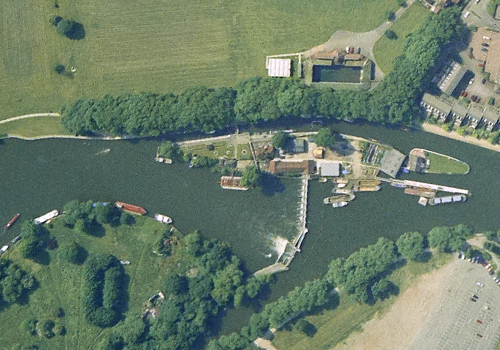Thames Path National Trail
The Thames Path is a National Trail which runs for 213 miles (340km) from the river's source, near Cirencester, to the Thames Barrier, in London. The path meanders through open countryside and meadows, and passes around historic towns and cities.
The non-tidal, western section of the route, from the source to Teddington, can be traced through aerial photographs on our website. This feature highlights some of the most notable features along the way.












